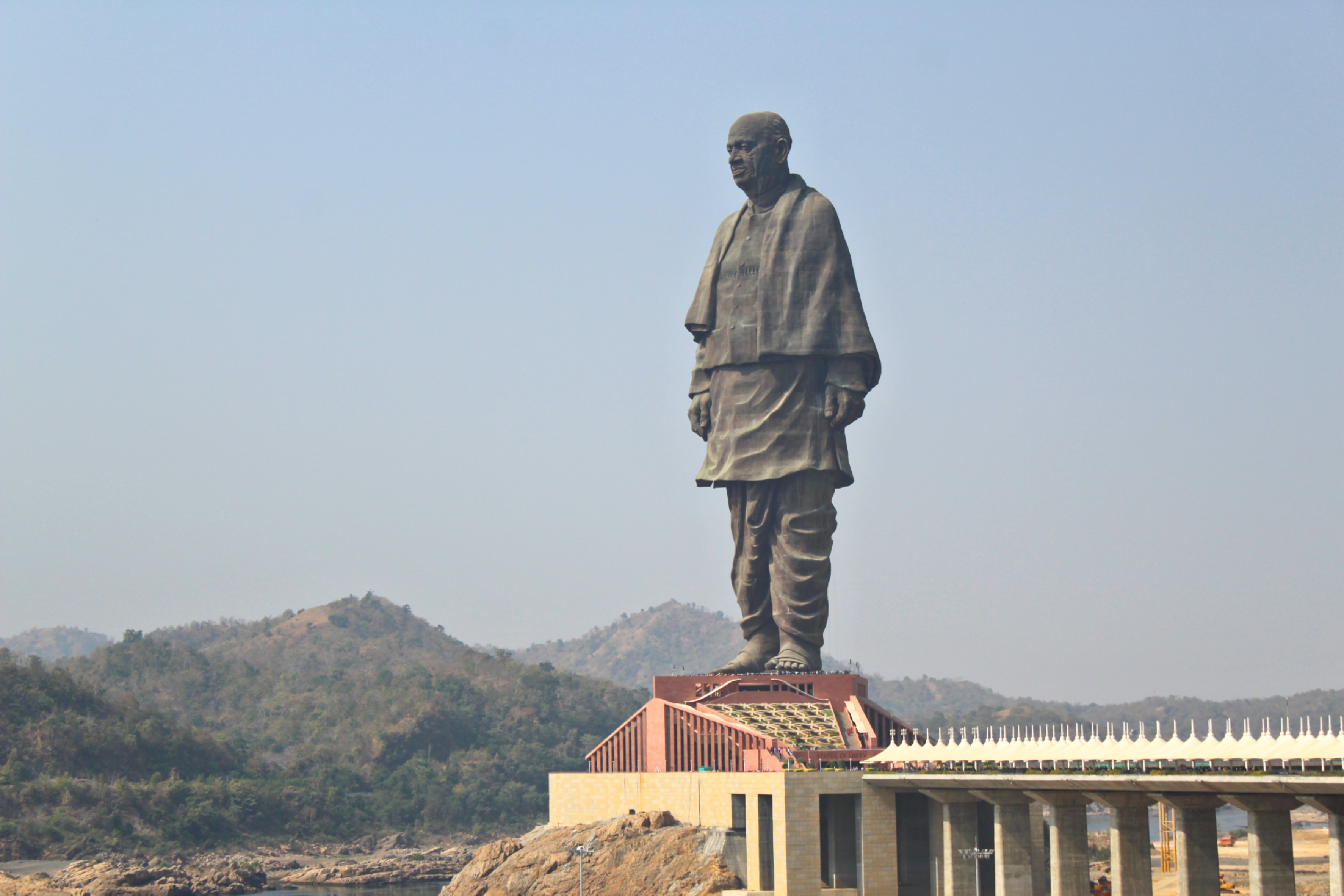The Statue of Unity: A Monumental Tribute to Vallabhbhai Patel
The Statue of Unity stands as the world’s tallest statue at a staggering height of 182 meters (597 feet), surpassing the previous record holder, the Spring Temple Buddha in China. Situated near Kevadia in the state of Gujarat, India, this colossal statue represents Vallabhbhai Patel (1875–1950), a key figure in India’s struggle for independence and the nation’s first deputy prime minister and home minister. Patel, also known as the ‘Iron Man of India,’ played a pivotal role in the political integration of the country, earning him a place of honor in India’s history.
Get your dose of History via Email

Historical Context and Construction
The idea for the Statue of Unity was first announced in 2010, with construction commencing in October 2013. The project was spearheaded by Larsen & Toubro, an Indian company, at a cost of ₹27 billion (US$422 million). The statue was designed by the renowned Indian sculptor Ram V. Sutar, and it was inaugurated by Prime Minister Narendra Modi on 31 October 2018, coinciding with the 143rd anniversary of Patel’s birth.
The construction of the statue was not just a feat of engineering but also a movement that involved the people of India. The Statue of Unity Movement, initiated in 2013, called upon farmers to donate their used farming instruments to contribute to the iron needed for the statue’s foundation. This initiative saw the collection of 135 metric tonnes of scrap iron, of which 109 tonnes were utilized after processing.
Design and Engineering Challenges
The statue’s design, inspired by a smaller version of a Patel statue at Ahmedabad International Airport, was chosen after careful consideration by a team of historians, artists, and academics. The design aimed to capture Patel’s dignity, confidence, and kindness, with his head held high and a shawl draped over his shoulders. The statue’s construction presented numerous challenges, particularly due to its slender base and the need for it to withstand high winds and earthquakes. These were ingeniously addressed through the use of tuned mass dampers and a robust structural design.
The total height of the structure, including its base, is 240 meters (790 feet), with the statue itself measuring 182 meters (597 feet). The choice of 182 meters was symbolic, representing the number of seats in the Gujarat Legislative Assembly.
Funding and Construction Details
Funded through a Public-Private Partnership model, the Statue of Unity saw significant contributions from the Government of Gujarat and the Indian Union Budget, alongside funds from Public Sector Undertakings under the Corporate Social Responsibility scheme. The construction was a monumental task, involving over 3000 workers and 250 engineers. The core of the statue utilized vast amounts of cement, concrete, and steel, with the outer façade comprising bronze plates and cladding cast in China due to the unavailability of suitable facilities in India.
Features and Tourism
The Statue of Unity is not just a marvel of engineering but also a comprehensive tribute to Vallabhbhai Patel. It includes a museum detailing Patel’s life and contributions, an audio-visual gallery, and a viewing gallery at a height of 153 meters offering panoramic views. Since its inauguration, the statue has attracted millions of visitors, contributing significantly to tourism and the local economy.
Conclusion
The Statue of Unity stands as a testament to Indian engineering and craftsmanship, as well as a symbol of national pride. It commemorates the legacy of Vallabhbhai Patel, whose efforts in unifying India continue to inspire generations. This monumental statue not only honors a national hero but also showcases India’s capabilities in executing projects of such grandeur and significance.
Sources:

